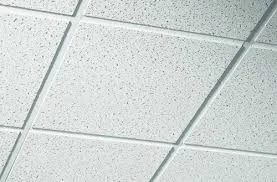Dec . 12, 2024 09:43 Back to list
t bar ceiling panels
The Advantages and Applications of T-Bar Ceiling Panels
T-bar ceiling panels have gained significant popularity in commercial as well as residential construction due to their practicality, flexibility, and aesthetic appeal. These ceiling systems consist of a grid of metal strips arranged in a T-shape, which serves as the framework for suspended ceiling tiles or panels. As we explore the various advantages and applications of T-bar ceiling panels, it becomes evident why they have become a preferred choice in many building projects.
Versatility and Flexibility
One of the primary benefits of T-bar ceiling panels is their versatility. They can be installed in a variety of spaces, including offices, schools, hospitals, retail establishments, and residential properties. The modular nature of the T-bar system allows for easy installation and modification. If a ceiling tile gets damaged or if there’s a need for upgrades—such as installation of lighting fixtures, ventilation, or wiring—the individual panels can be easily removed and replaced without disrupting the surrounding panels.
Moreover, the ability to customize the height of the ceiling is a significant advantage. T-bar ceilings can be installed at various heights, accommodating the specific architectural needs of the building. This adaptability also helps in concealing unsightly wiring, ductwork, and plumbing, offering a cleaner and more organized appearance.
Aesthetic Appeal
T-bar ceiling panels are available in a wide range of materials, colors, and styles, allowing designers and architects to create visually appealing environments. From basic white panels to tiles with intricate designs or textures, the options are virtually endless. This aesthetic flexibility means that T-bar ceilings can complement the design theme of any space, whether it’s a modern office, a cozy restaurant, or a healthcare facility.
Additionally, T-bar ceilings help in creating an illusion of height and spaciousness in smaller areas. By opting for lighter tones and reflective surfaces, these ceilings can make a room feel larger and more open. The combination of good design and functionality leads to more productive and comfortable environments for occupants.
t bar ceiling panels

Acoustic Control
Another essential feature of T-bar ceiling panels is their ability to enhance sound control within a space. Many ceiling tiles are designed to absorb sound, which is especially beneficial in environments such as offices and classrooms where noise can lead to distractions. High-quality acoustic tiles can significantly reduce noise levels, promoting a more focused and productive atmosphere.
The sound-absorbing properties of T-bar ceiling panels are further enhanced when combined with other acoustic treatments, making them a practical choice in spaces where noise management is crucial, such as auditoriums, conference rooms, and open-plan offices.
Cost-Effectiveness
From a financial perspective, T-bar ceiling panels offer a cost-effective solution for ceiling construction. Their modular nature means that installation is quick and straightforward, often reducing labor costs. The materials used for T-bar ceilings are typically less expensive than traditional drywall or plaster ceilings, making it an attractive option for budget-conscious projects.
Moreover, the durability of T-bar ceiling systems minimizes the need for frequent repairs or replacements, contributing to long-term savings. Resistant to moisture and damage, some tiles can last for many years, making them a wise investment for both commercial and residential applications.
Conclusion
In conclusion, T-bar ceiling panels are a versatile, aesthetically pleasing, and cost-effective solution for various construction projects. Their ease of installation and maintenance, ability to provide acoustic control, and extensive design options make them a favorable choice for architects and builders. Whether enhancing the functionality of a workspace or creating a welcoming atmosphere in a home, T-bar ceilings have proved to be an integral component of modern construction. As trends continue to evolve, their significance in the building industry is likely to grow, paving the way for innovative designs and applications in the future.
-
Quality Ceiling Trap Doors & Access Panels | Easy & Secure AccessNewsAug.30,2025
-
Durable Ceiling T Grid Systems | Easy InstallationNewsAug.29,2025
-
PVC Gypsum Ceiling: Durable, Laminated Tiles for Modern SpacesNewsAug.28,2025
-
Pvc Gypsum Ceiling Is DurableNewsAug.21,2025
-
Mineral Fiber Board Is DurableNewsAug.21,2025
-
Ceiling Tile Clip Reusable DesignNewsAug.21,2025







